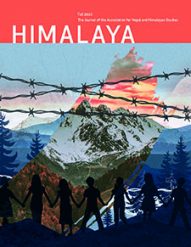Photo Essay
Belonging and Transformation in Mustang, Nepal
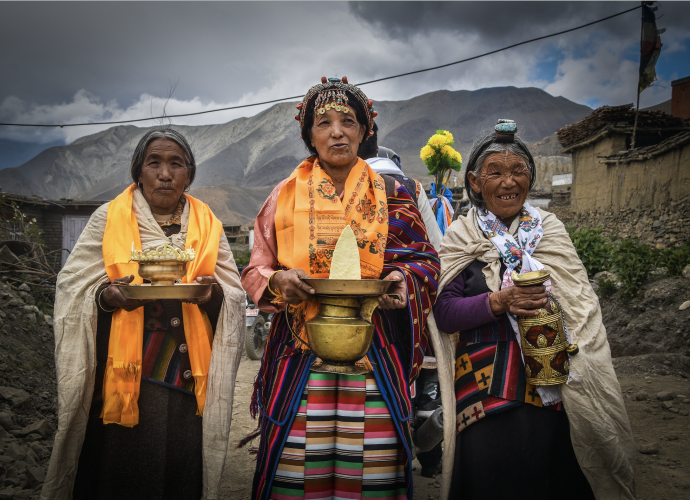
Wedding Ritual. (Yungdrung Tsewang, May 2016) Wedding reception in the Jharkot village of Mustang, Nepal. Women carrying torma (T. religious sculpture of dough prepared out of flour) in the center, and chang and arak (locally-made alcohol), sing and welcome a newlywed couple to give them blessings for a prosperous future.
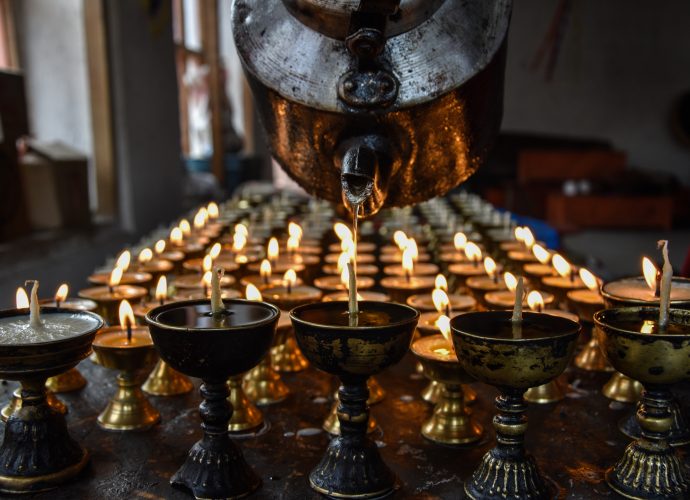
Hope and Blessings. (Yungdrung Tsewang, September 2017) Butter lamp offerings in memory of a spiritual leader—the 33rd abbot of the Menri lineage of a pre-Buddhist religion known as Bön. Although the religious tradition of Bön is not as prevalently practiced today, the small village of Ludak is one exception. This Bonpo settlement has maintained the ancient traditions of Bön and continue to practice in the face of ongoing development and social change
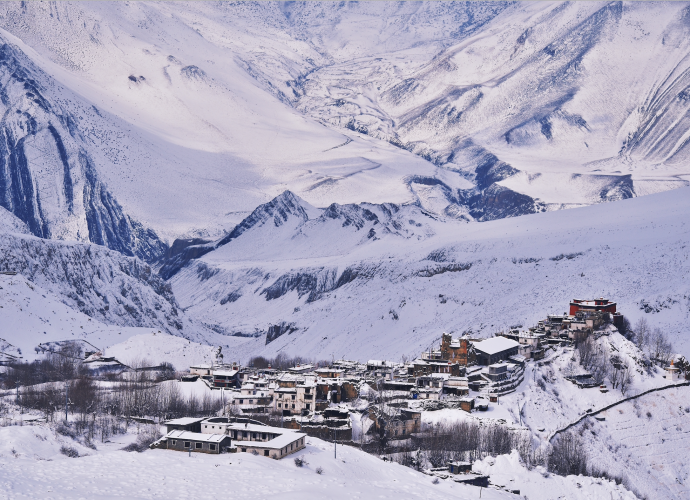
Life on Hold. (Yungdrung Tsewang, January 2019) Winters in Mustang are freezing cold with temperatures dropping below -4ºC. Life in this part of the Himalayas seems to stop as many people now escape to cities where the climate is warmer. Villages are silent as only one member of the household stays behind to tend to the animals. It is a lonesome time.
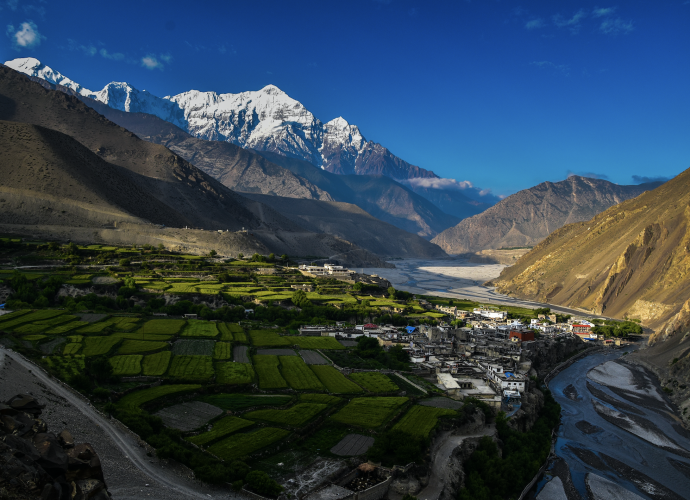
Kag. (Yungdrung Tsewang, August 2016) Kagbeni, or Kag as it is locally known, dates back centuries to when the fort was used as the corridor for salt moving south from Tibet and grains moving north. Mt. Nilgiri and the Kali Gandaki river can be seen in the background.
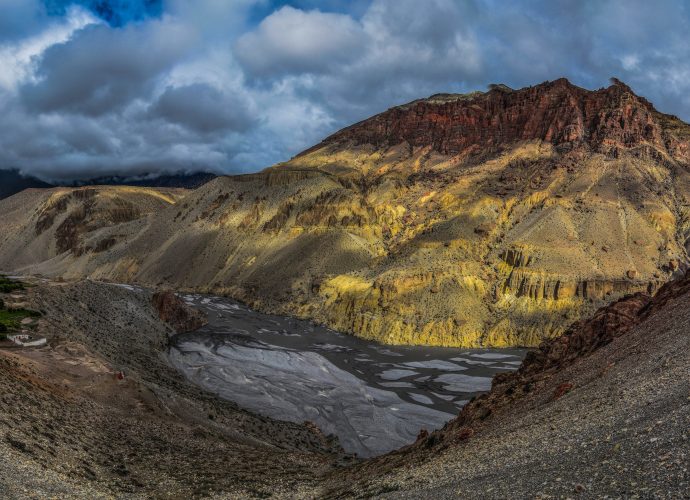
Development. (Yungdrung Tsewang, April 2016) The construction of roads is ongoing in Mustang. Though development has brought about positive changes, the consequences are serious. Many historical trade routes have been damaged, and chörtens (stupas) holding great histories are in danger. Along the entrance to the once forbidden kingdom of Lo Monthang, the ancient landscape is quickly being radically altered by state development projects.

Grain. (Yeshi Gurung, October 2017) Buckwheat is a main food crop in Mustang. It is harvested during mid-October and handpicked for a better taste. There has been less production in recent years, which has led to higher costs. Buckwheat harvesting is a shared responsibility between all people in the village.
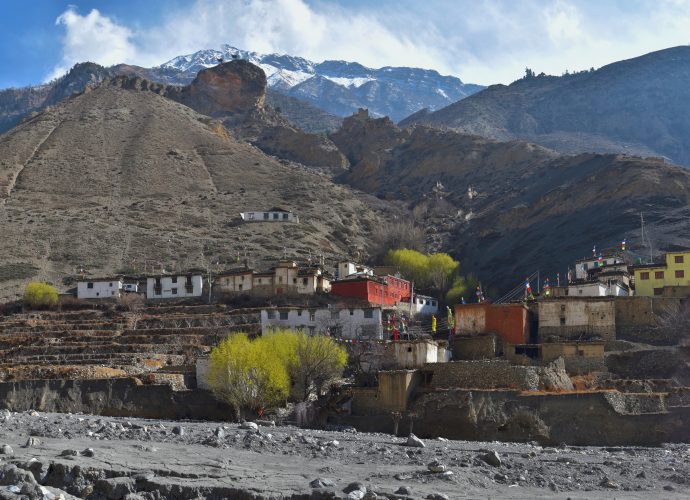
Uncertain Futures. (Yungdrung Tsewang, March 2018) The village of Ludak, has suffered grave environmental damages as a result of climate change. Each year, monsoon floods take away more arable land, with now more than half of the village’s agricultural fields having been washed away. These changes have exponentially increased over the past decades and present a very real threat to this small village. In countries like Nepal, where minority communities are often ignored by state bureaucrats and politicians, the people of Ludak are fighting to preserve their livelihoods and the great Bön traditions in the face of becoming climate refugees.
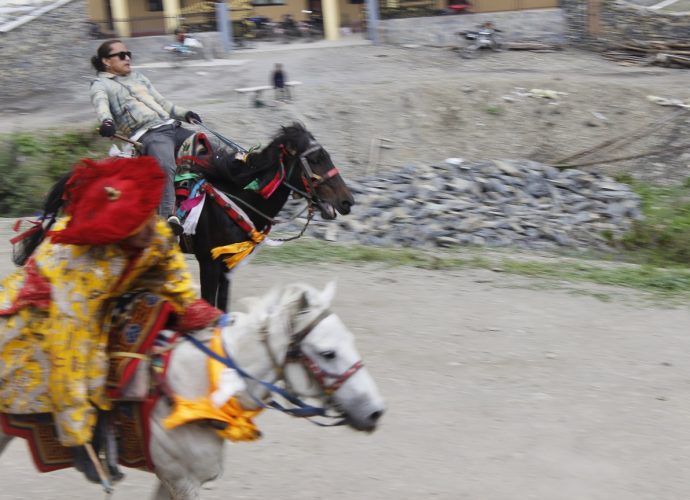
Yartung. (Yeshi Gurung, October 2016) Yartung is celebrated after harvesting season to welcome the winter months. The festival is an opportunity for social gathering, exhibition of local culture, and a good time for tourists to visit. During the festival, participants perform cultural songs and traditional dances. However, Yartung has changed a lot in recent years. There is more western influence now and fewer traditional activities.
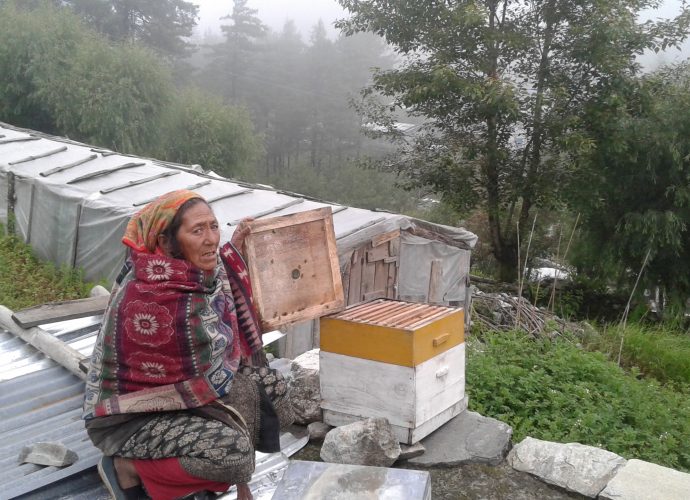
Beekeeper. (Tshering Gurung, July 2016) Within the region formerly known as Kunjo VDC (Village Development Committee), beekeeping is an important livelihood strategy along with agricultural production. the government has been providing technical support, and some women are able to make a small income selling honey.
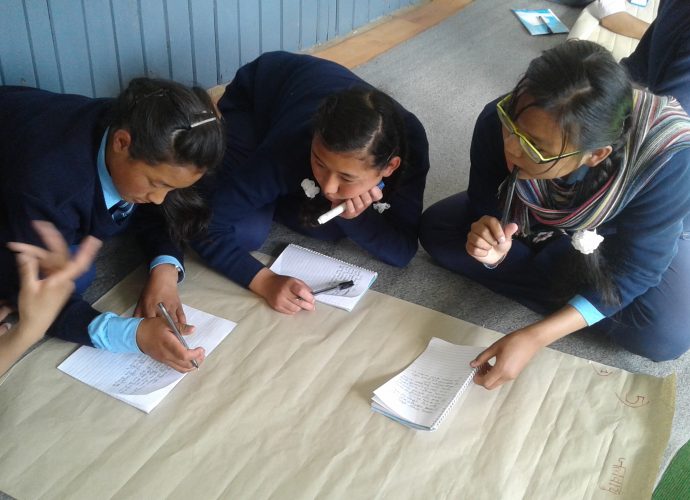
Climate Change Workshop. (Tshering Gurung, June 2016) A workshop organized at a local school for youth to learn about climate change and empower them with practical knowledge. During this event, children were able to discuss what they can do to address climate change. Some of them committed to using plastic bags minimally, and assured organizers that they will be teaching or giving awareness on climate change to others.
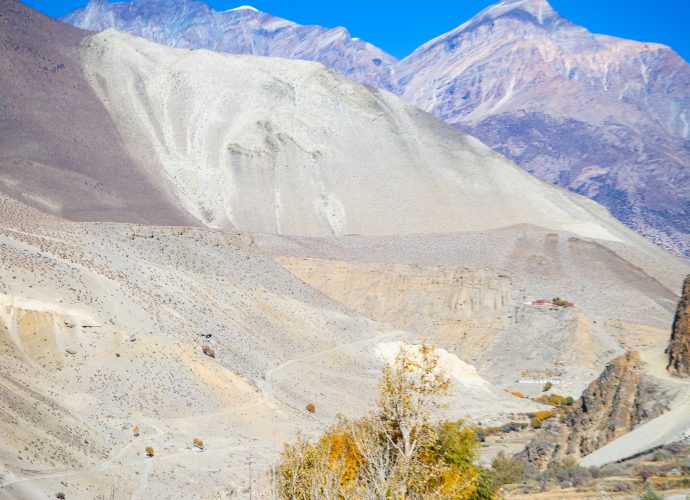
Fields. (Kory Thibeault, October 2016) Agricultural production over the past few decades has decreased due to climate change and the outmigration of many residents in Lower Mustang. Youth are leaving for educational and employment opportunities abroad, and there is a shortage of labor within villages. This photo was taken right after the harvesting season concluded, as community members pray for a productive harvest next season.
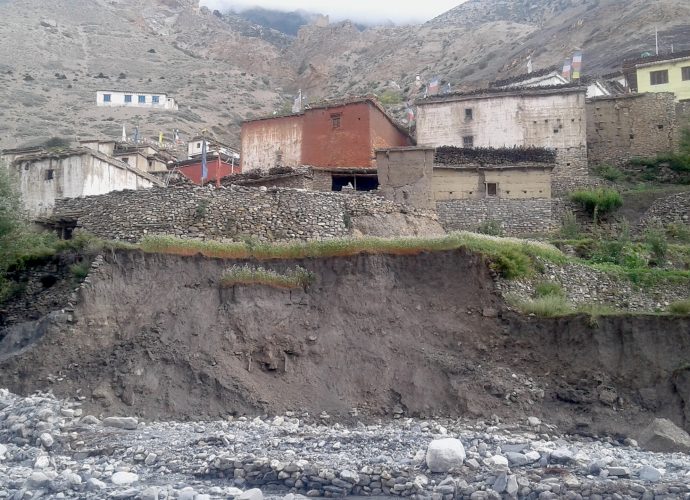
Effects of Flooding. (Tshering Gurung, August 2016) Unpredictable weather patterns have led to fertile lands being destroyed by flooding, scarcity of drinking water, water-borne diseases, and a growing number of insects and pests. As a result of climate change, agricultural land has diminished and houses are in danger of being washed away.
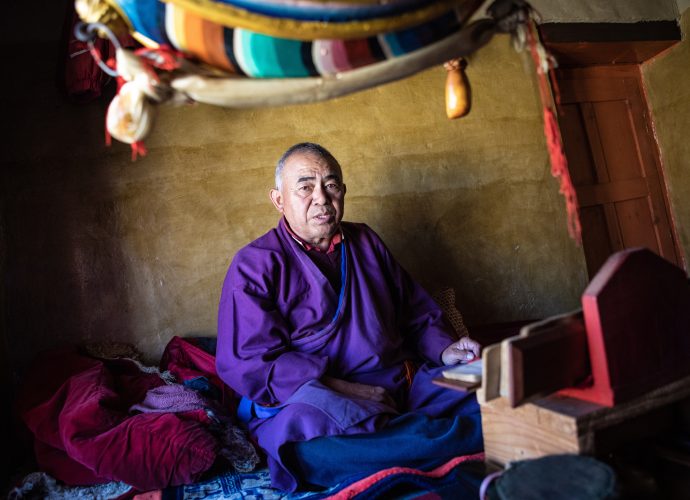
Scriptures. (Kory Thibeault, October 2016) His holiness, Yungdrung Gyaltsen Rinpoche, is a reincarnated lama now living in in the Lubra village to serve as a religious practitioner to preserve the older Bön traditions in this region. His vast knowledge is highly respected by people throughout the Mustang district.
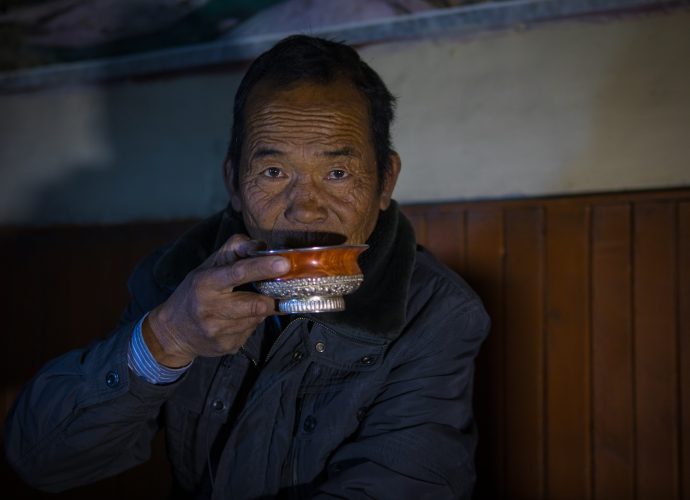
Norbu. (Kory Thibeault, October 2016) Norbu is a renowned community leader and politician. This photo was taken after a long day working in his apple orchards near the village of Kagbeni. He enjoys a hot butter tea while recounting stories of his life and old customs of the region.

Sadhu. (Kory Thibeault, October 2016) A sadhu (an ascetic holy person) at the temple in Muktinath, Lower Mustang. Sadhus travel many miles from southern parts of Nepal and India to offer their services and prayers at the famous temple in the Muktinath village. They walk bare foot crossing borders and harsh terrain, asking for donations of food and shelter, and offer blessings to devotees.
by Yungdrung Tsewang, Tshering Gurung, Yeshi Gurung, Kory Thibeault, and Emily Amburgey
These photographs explore the social, environmental, political, and economic transformation among communities in Mustang, Nepal—situated along the border of the Tibetan Autonomous Region. This region is home to unique high-desert ecologies, contentious geo-political histories, plural medical systems, and well-maintained religious traditions.
Despite Mustang’s reputation as a hidden kingdom, or ‘modern Shangri-La’, the increasing number of young people leaving for employment and educational opportunities abroad the effects of climate change—including unpredictable weather patterns, flooding and landslides, new water-borne diseases, and in some cases the relocation of whole settlements—have drastically changed life in these mountains.
The signs of transformation are hard to miss. They are apparent in the bulldozers and construction teams scattered along the road, in the newly constructed hotels and guesthouses advertising hot showers and free internet to passing trekkers, and in the fallow agricultural lands and empty houses. Less obvious are the class divisions that allow certain people to migrate while others stay behind, the decreasing numbers of practicing Buddhist monks, and the lack of spoken Tibetan among younger generations.
While we carried out a digital storytelling project in the fall of 2016, community members referred to the instability of recent decades using the Tibetan phrase, kyidug manyom. This phrase translates to an ‘imbalance of happiness and suffering’, and was used in reference to issues of cultural and linguistic loss, the decline of Buddhist monastic education, and the increasing number of family members migrating abroad. This sentiment suggests that although development and change in many forms provide economic benefit, the consequences remain an uncertain and ever-present part of daily life.
Using landscape and portrait photography, this photo essay is a compilation of work from artists who have, at various times over the past three years, worked together in an effort to visually explore the unique environment of Mustang. Against the backdrop of Nepal’s decade long armed conflict (1996-2006), catastrophic earthquakes in 2015, and the ongoing political upheavals as the country formally transitions from a centralized Hindu state to the Federal Democratic Republic of Nepal, residents are navigating their increasingly transnational livelihoods, the dynamics of inter-generational social change, and the pressures of environmental transformation.
We would like to thank the communities of Mustang, who dedicated their time and energy throughout this project. Verbal or written consent was given by each participant named and photographed here.
Artist Bios
Yungdrung Tsewang ([email protected]) is a conservationist and photographer from Mustang, Nepal. He currently works for the Annapurna Conservation Area Project, and has worked on several research projects with Yale University and University of British Columbia faculty and students. Yungdrung hopes to remain in Mustang to preserve local cultural practices against the effects of climate change and migration.
Yeshi Gurung ([email protected]) is from Lower Mustang, Nepal. She grew up in this region and currently helps manage her family’s guesthouse and restaurant in the village of Kagbeni.
Tshering Gurung ([email protected]) graduated from Tribhuvan University majoring in Rural Development and has been working in the field of development over the last six years in Mustang. She has been part of different local NGOs and involved with a USAID project on nutrition, health, and education. She is currently working as a Community Mobilization Officer under the USAID-funded ‘Early Grade Reading Program’. She has a strong desire to utilize her knowledge for the betterment of her community.
Kory Thibeault ([email protected]) is from Connecticut, U.S. and relocated to California to pursue filmmaking and photography. He studied Film Production at Loyola Marymount University in Los Angeles where he focused on documentary filmmaking. More recently he has turned his attention towards photojournalism and currently runs a photography studio in Oakland, California.
Emily Amburgey ([email protected]) is a PhD Student in the Department of Anthropology, Liu Scholar, and Public Scholar at the University of British Columbia. Emily’s doctoral research examines how transnational labor migration and climate change inform notions of belonging and territoriality in and between Nepal, India, and New York City.
